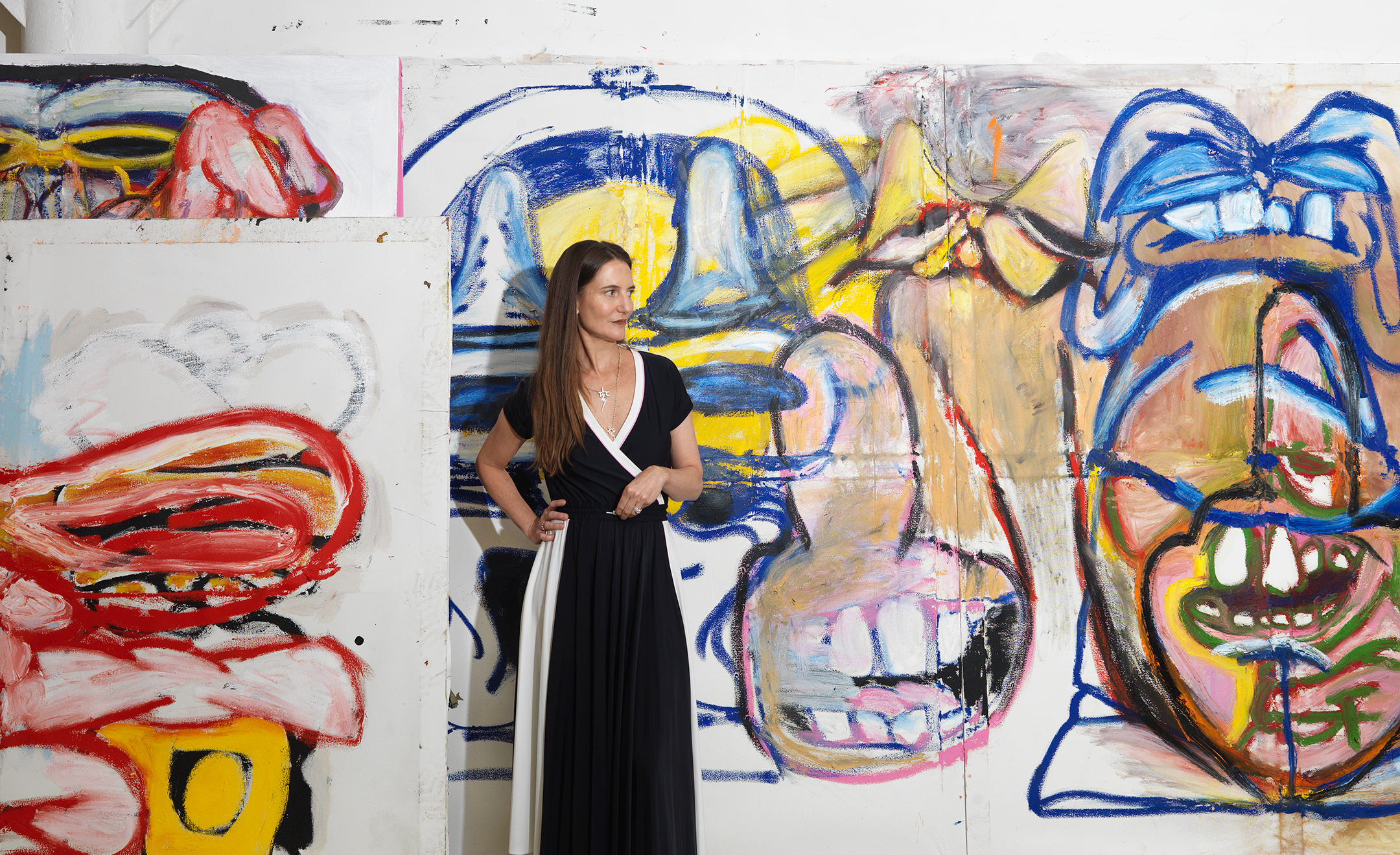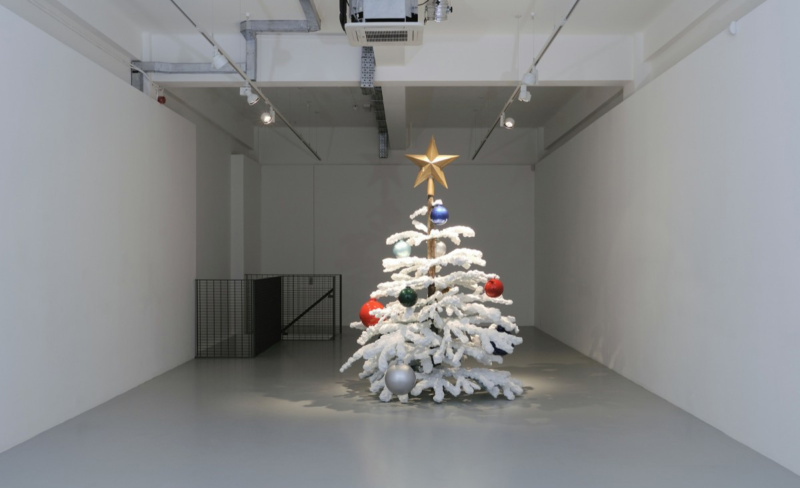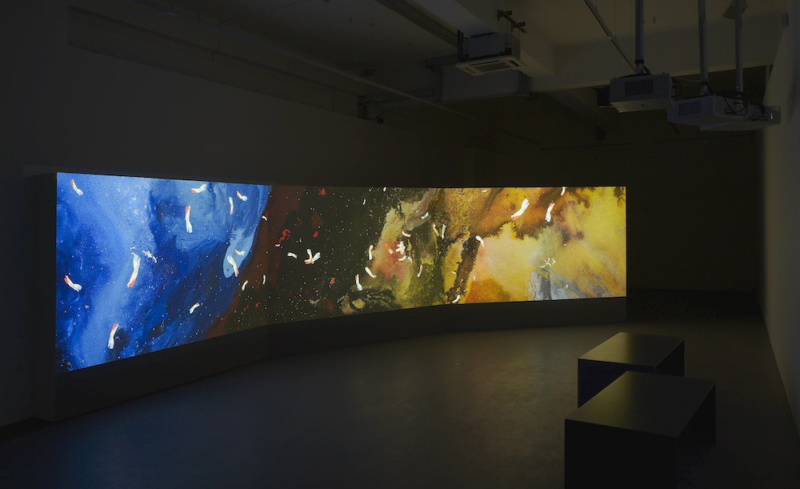
“It is a big deal, but some galleries are 50 years old,” Pilar Corrias asserts with a casual finality when I ask her about the 10 years she has spent running her eponymous London gallery, which opened in 2008, the year of a global financial collapse. Overnight the art market nosedived, and when many spaces were shutting their doors, Corrias enlisted Rem Koolhaas to design her 3,800-square-foot Fitzrovia space. She opened that October with four artists on her roster and inaugurated the gallery with a Philippe Parreno exhibition. Today, she represents 24 emerging and established artists.
When Corrias recounts the decade spent building her program, she is at times excited and always sincere, with an unflappable confidence. Much of the openness and inclusivity that has recently emerged in the art world has been forged by women with this sort of self-possession. Corrias’s gallery is a testament to this shift, with a diverse program of artists from four continents—63 percent of whom are women—working across painting, sculpture, video and performance. Corrias’s staff is more than 50 percent female, and when she needed a new website she hired Metahaven, an Amsterdam-based art and design collective who Corrias calls “the ultimate anti-corporate designers.”
“Many people say the art world is not what it used to be, that it was so much better before. Now it’s so aggressive and so competitive and it’s global,” says Corrias. “This is all true. But I think that it’s a much better place if you’re from China, if you’re a woman, if you’re African- American. It’s a tougher, more competitive art market, but it’s also more inclusive.”

Corrias’s mother was a painter, and she grew up looking at art—she counts a portrait of her mother and grandmother by Diego Rivera as part of her personal collection. She studied fine art at the University of Exeter and received an MA in art theory from Goldsmiths before starting at Lisson Gallery in 1993, when she was 23 years old. “I was hired as a receptionist,” she recalls. She stayed on for 10 years, eventually becoming a director before leaving to join Haunch of Venison gallery in London. Her next big step was launching her own space with Parreno— showing just one work, Fraught Times: For Eleven Months of the Year it’s an Artwork and in December it’s Christmas (October). The realistic cast-aluminum Christmas tree sculpture was Parreno’s first tree, and marked Corrias’s place among the handful of high-profile female dealers in London, including Sadie Coles, Maureen Paley, Victoria Miro and Alison Jacques.
For the gallery’s 10-year anniversary, Corrias is planning a Groundhog Day event on October 2. She has asked Parreno to do another solo show—same place, same time, new work—but this time with a “dead” Christmas tree with no decorations, cast from stainless steel and painted to look frozen. Coinciding with Frieze London, Parreno’s anniversary exhibition celebrates the past, while the gallerist’s fair booth highlights the future with a presentation that includes works by only the female artists she represents: Koo Jeong A, Cui Jie, Helen Johnson, Tala Madani, Elizabeth Neel, Christina Quarles, Tschabalala Self and Shahzia Sikander, among others.

Quarles, who has her first solo show with the gallery this September, notes Corrias’s fearlessness in showing art beyond two-dimensional media by women. “I always look at the work first, but I love the fact that so many of the dynamic artists represented by the gallery are women,” she says. “As a woman navigating an art world dominated by men, it is meaningful to work with Pilar and her team of strong women in high-level positions.”
Fellow gallery artist Ian Cheng recalls the first time he met Corrias in 2013. “We talked for three hours and I had the feeling that she was weaving together, on the spot, a vision of how my early and unproven ideas could find a place in the world and flourish. Her energy, optimism and business inventiveness has 100 percent changed my life. Pilar is a radiant force of nature.”
With Frieze and several institutional shows of her artists planned for this fall, it’s shaping up to be a very busy anniversary. This seems to invigorate Corrias, who has consistently and unflinchingly fostered unconventional talent across both gender and age lines. When asked about the next 10 years, Corrias’s future plans include one day having a much larger space. For now, she is focused on continuing to do exhibitions and build a roster of artists that reflects a global art world, one she has undoubtedly helped to create.
Craving more culture? Sign up to receive the Cultured newsletter, a biweekly guide to what’s new and what’s next in art, architecture, design and more.










 in your life?
in your life?

